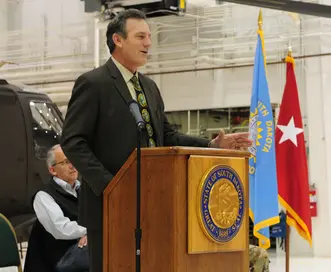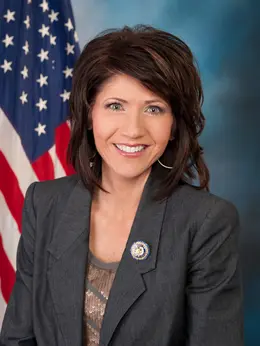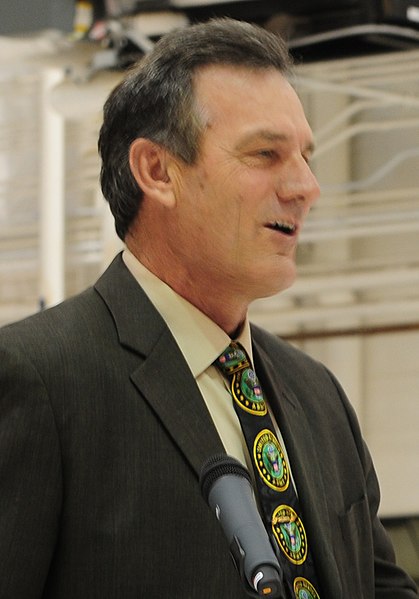In the heart of the Great Plains, South Dakota’s political landscape is undergoing a significant transformation under the stewardship of Governor Larry Rhoden. Known as a seasoned West River rancher, Gov. Rhoden has shifted the state’s focus back to pressing local concerns, marking a departure from the national spotlight priorly emphasized by former Governor Kristi Noem.

Larry Rhoden
Rhoden’s first significant move in office was the reinstatement of weekly news conferences, a practice shelved by his predecessor. This initiative underscores his transparent approach and commitment to keeping the citizens informed on vital state matters. “We’re on a different trajectory,” Rhoden expressed, indicating a shift towards traditional governance that prioritizes state-level issues over national engagements.
The administration’s revamped media relations strategy, led by Chief of Staff Mackenzie Decker and Press Secretary Josie Harms, focuses explicitly on enhancing press access. This strategy contrasts sharply with Noem’s media approach, which was characterized by a more contentious interaction with the press under former secretary Ian Fury.

Kristi Noem
Rhoden’s choice of Tony Venhuizen as the lieutenant governor brought seasoned governance experience to the administration. Venhuizen, who previously served as chief of staff under Gov. Dennis Daugaard and briefly under Noem, was known for his effectiveness in handling media queries with alacrity. The unanimous confirmation of Venhuizen by both the Senate and House reveals the bipartisan support Rhoden’s governance approach enjoys. This confirmation strengthens the administration’s resolve to address South Dakota’s unique challenges.
South Dakotans have shown significant interest in policies targeting property tax relief and local governance — areas where Rhoden’s focus is highly concentrated. This strategic orientation reflects not only his ranching background but also his keen understanding of the state’s grassroots needs.
The Rhoden administration has opted for a “nose-to-the-grindstone” strategy, working diligently on foundational government operations. This approach starkly contrasts with former Gov. Noem’s frequent appearances on the national media stage and her engagement in presidential campaign activities.
Mackenzie Decker
The people of South Dakota are taking note of this shift. There’s an air of cautious optimism as the administration actively tackles local issues, promising tangible benefits for communities statewide. Rhoden’s leadership is seen as a return to traditional governance values, resonating with many who favor a focus on homegrown concerns over Washington’s political theatrics.
Meanwhile, political analysts and voters alike are speculating about Rhoden’s intentions for the 2026 gubernatorial election. While uncertainties loom, Rhoden’s focus remains firmly on steering South Dakota towards stable governance and prompt responsiveness to its citizens’ needs.
This focus on state-level priorities signals a healthier dialogue between the government and its people — an echo of practical governance deeply rooted in the values and interests of South Dakota’s residents. For those seeking an administration that aligns with the core values of the local populace, Rhoden’s leadership represents a promising trajectory.
As South Dakota steers away from the nation’s spotlight, it’s forging a path of traditional, effective, and localized governance under the leadership of Gov. Larry Rhoden, reflecting what many hope to be a prosperous and steadfast future. This administration embodies the spirit of South Dakota, honoring its heritage and prioritizing the needs of its people.
